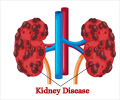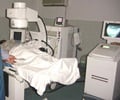Reduced kidney function and protein in the urine place a person at risk for kidney injury, according to a study appearing in an upcoming issue of the Journal of the American

Although many cases of AKI may be an inevitable result of severe illness, some cases may be preventable by adjusting medication doses or limiting the use of intravenous contrast agents, which are commonly used to improve the visibility of internal bodily structures. To avoid the potential after effects of AKI, researchers are interested in identifying individuals at increased risk for AKI and preventing the initial damage to the kidneys.
Morgan Grams, MD, Josef Coresh, MD, PhD, and their colleagues at Johns Hopkins University studied risk factors for AKI in the general population. Using information from a large population-based group of 11,200 individuals who were followed for an average of eight years, the investigators evaluated the potential links between acute kidney injury and markers of reduced kidney function (estimated glomerular filtration rate, or eGFR) and kidney damage (protein excreted in the urine, or albuminuria), as well as traditionally recognized risk factors, such as age, race, and sex.
Dr. Grams, Dr. Coresh, and their team discovered that patients with the highest levels of albuminuria had almost a 5-fold increased risk of developing AKI. Similarly, the risk of developing acute kidney injury increased, as eGFR decreased. These associations persisted within subgroups of patients categorized by age, race, and sex. "The results suggest that a person's risk profile for acute kidney injury depends not only on eGFR, which is the basis of the current kidney disease staging system, but also on levels of albuminuria," said Dr. Grams, the lead author on the paper. The authors noted that as strategies for AKI prevention are developed, preventative measures should be considered for patients both with albuminuria and decreased eGFR.
Source-Eurekalert















